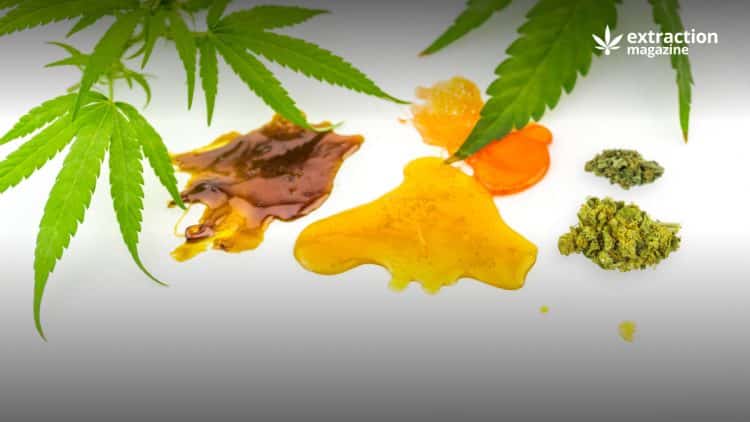Color remediation of cannabis extracts is a critical process within the cannabis industry, especially for products intended for consumption. The color of cannabis extracts can vary widely due to factors such as extraction methods, plant material, and post-processing techniques. However, consumers tend to expect certain color profiles in the cannabis products they purchase. So, color remediation is often used to generate a product more in-line with the typical expectations of consumers. Importantly though, color remediation does not only provide aesthetic benefits; it can also affect the potency and overall quality of the product. [1]
Color remediation through Chromatography
Chromatography separates substances according to their chemical characteristics, which aids both in identification and purification. The fundamental principle of chromatography involves the interaction between the components of a mixture (cannabis and its extracts, in this example) and a stationary phase (a solid or liquid) and a mobile phase (a liquid or gas) that moves through or over the stationary phase.
As the mobile phase passes through the stationary phase, the different components of the mixture interact with it to varying degrees. This interaction causes the components to separate and move at different rates, leading to their distinct migration and separation.
The most popular approach in cannabis production is a color remediation column (CRC), which targets the removal of dark pigments from the cannabis. So, in color remediation chromatography, the primary goal of the procedure is to selectively pull out color contaminants, while minimizing the loss of desired chemicals in the final product (i.e., cannabinoids, terpenes, and flavonoids).
Different stationary phases are used depending on the kind of compounds we want to get rid-off, but a common substrate for color remediation is a mix of bentonite clay and silica gel. [2] The chromatographic process could be not perfectly selective for contaminants. For this reasonmanufacturers must strike a balance between color extraction, desired purity and terpenic profiles.
Pharmaceutical companies producing medical-grade products must ensure the manufacturing of a consistent, reliable product. The color of the product is one common means to verify the quality of the extract and if it has been manufactured as intended (i.e., it is common for pharmacists to check color before dispensing to ensure a medication meets standards – if a drug is “off color”, it is likely to also be “off” in other key domains, including dose). So, establishing color standards is a vital component of drug manufacturing patents.
In the case of cannabis isolates, some patents describes the process for producing “clear colorless solutions” of cannabinoids, and it is defined what the final product should look like.
Risks of color remediation practice
While the legitimate use of color remediation technology aims to enhance the quality and safety of cannabis products for consumers, ethical concerns and potential deceptive practices within the industry arise. The color of cannabis extracts has long been associated with product quality, and consumers often associate vibrant colors with higher quality extracts. However, unscrupulous operators may exploit color remediation techniques to transform lower quality extracts into visually appealing golden products, misrepresenting their quality to consumers. This raises ethical concerns about transparency and consumer trust within the cannabis market.
There is also some question about what should be done about residual solvents, which are used in the color remediation process to remove pigments. Many jurisdictions have specific laws/regulations about how to monitor for residual solvents and what levels are acceptable. Establishing procedures verifying and minimizing residual solvents is important, as these compounds could potentially have health implications. [3] Furthermore, there are also no currently established/widely-used guidelines for labeling a product as having undergone color remediation. Doing so could help boost transparency and inform consumer choice.
In conclusion, color remediation is already commonly used in the cannabis industry. Chromatography is a powerful purification technique and there are already well-established practices for using chromatography to ensure a final product looks the way it should. There is still variation in how consistently different manufacturers adhere to gold-standards of production/extraction. As technology continues to advance, the cannabis industry must navigate the procedural and ethical challenges described herein to establish responsible practices and maintain the integrity of its products.
References:
[1] Kunle, Oluyemisi, F., Egharevba, Henry, O., Ahmadu and Peter, O. Standardization of herbal medicines-A review. International journal of biodiversity and conservation. 2014, 4(3), pp.101-112.











